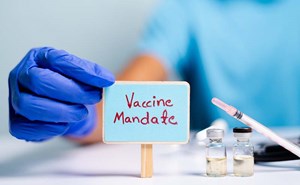Last week, the Trump Administration announced a significant policy that may affect many of the patients you serve—the Healthy Adult Opportunity (HAO). This new voluntary Medicaid initiative would provide states that choose to participate with more flexibility to serve a segment of their adult Medicaid population, while capping the total federal funding that is available.
For the last two years or so, the Centers for Medicare & Medicaid Services (CMS) Administrator Seema Verma has explored a specific way of controlling Medicaid spending—by transitioning the entitlement program into a “block grant” program. Block grant programs, such as the Temporary Assistance for Needy Families, or “welfare,” cap the amount of federal funding available to states to serve the eligible population.
Many patient advocates have pushed back against a block grant approach to Medicaid. Beyond the question of its legality, many feel that limiting federal funding for a vulnerable population could impact access to care and lead to poorer health outcomes.
The HAO initiative tries to address some of this criticism. First, it would only apply to adults under age 65 who are not eligible for Medicaid on the basis of disability or need for long-term care services (i.e. adults who are covered under the Affordable Care Act Medicaid expansion). Therefore, families and children who have traditionally been covered by Medicaid would not be affected. States would also have to cover all 10 essential health benefits, which include emergency services.
Under the HAO, states could choose one of two financing mechanisms—an aggregate spending cap or a per-capita spending cap. These caps would be determined based on historical spending for the state on the eligible population and updated by inflation. If states exceed the cap, they could not receive any additional federal funding. A state can be eligible to share in some of the savings it achieves with the federal government if it comes below the spending target. In order to receive shared savings, a state would need to meet certain quality metrics. States would also have to report quarterly on a set of continuous CMS performance indicators that are intended to reflect whether access to care has been impacted. One of these performance indicators is “total emergency department visits per month, including for non-emergency reasons, which can be an indicator of poor primary care access.”
Overall, ACEP believes the HAO initiative could negatively impact patients’ access to care since it may leave states without sufficient resources to meet the needs of those most vulnerable in our communities. We have put out a press release expressing our concern with the initiative. You may have also seen another powerful response from a member of the emergency medicine community. The day the HAO was launched, Dr. Rob Davidson, an emergency physician practicing in western Michigan, confronted Vice President Mike Pence about the policy, specifically asking the Vice President how it may affect the patients he treats in his emergency department.
We also feel that there are better ways of controlling Medicaid spending and improving quality. As I have wrote about previously, the Acute Unscheduled Care Model (AUCM)— the alternative payment model developed by ACEP— is an excellent framework that state Medicaid agencies could pursue for emergency medicine as they continue to explore potential value-based payment approaches.
Finally, I want to reiterate that the HAO is a voluntary demonstration program and states will have to actively apply. Since the HAO allows states to individually tailor the program, it’s very difficult to predict exactly how access to care may be impacted. Some states could potentially use this initiative as a means to expand their Medicaid populations to cover adults. The Governor of Oklahoma has already announced his intention to apply for the initiative, and we will keep our eye out for others.
Until next week, this is Jeffrey saying, enjoy reading regs with your eggs!






